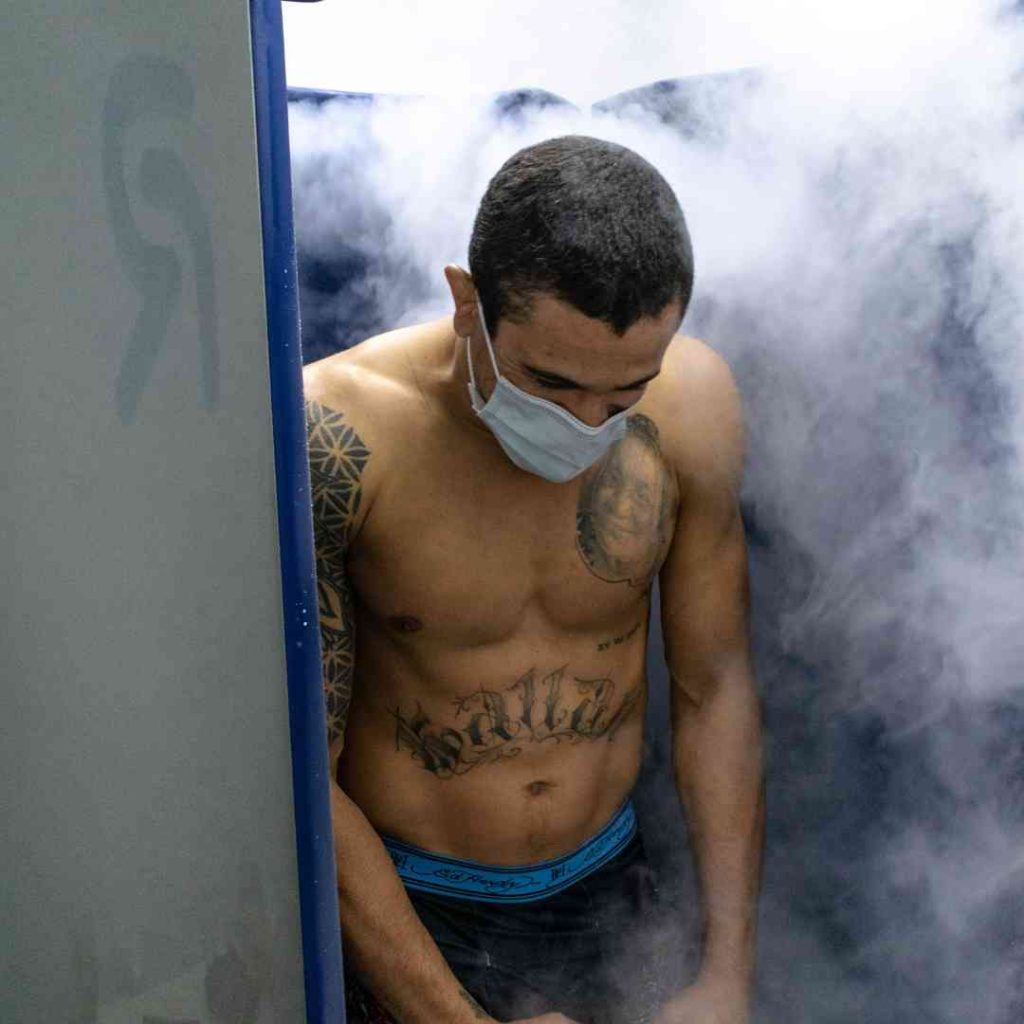Disclaimer: You should always first consult your physician to make sure that cryotherapy is suitable for you
- How often should you get WBC?
The frequency of WBC sessions may vary depending on factors such as age, overall health, physical activity level, and specific health goals.
Acute vs. Chronic Conditions:
For acute conditions or post-exercise recovery, more frequent sessions may be beneficial, while for some of the chronic conditions or maintenance of general well-being, a less frequent schedule may suffice.
- Who can benefit from whole-body cryotherapy?
· Athletes
· Chronic pain sufferers
· Injury rehabilitation
· Skin conditions (Whole body cryotherapy may benefit certain skin conditions such as psoriasis, eczema, or dermatitis. The cold temperatures can help reduce itching and inflammation, leading to improved symptoms for some individuals)
· Mood and energy
· Immune function
3. Does WBC help with rheumatoid arthritis?
The observed enhancement in the rehabilitation of RA patients, achieved through physical therapy and kinesiotherapy tailored to the patient’s individual needs and encompassing at least five procedures, demonstrated a holistic approach to rehabilitation, irrespective of the specific treatment modality employed.
Nonetheless, the notable reduction in CRP levels following whole-body cryotherapy indicates its advantageous anti-inflammatory impact, suggesting it is a valuable complementary therapy alongside pharmacological treatments for RA.
4. Does WBC help with Respiratory function?
This study looked at what happens to people’s breathing and energy levels after they try whole-body cryotherapy (WBC), which involves exposing the body to frigid temperatures for a short time. The researchers also wanted to see how differences in body shape between men and women might affect how people react to the cold.
They found that after a brief session of whole-body cryotherapy, people breathed more, used more oxygen, and burned more energy compared to when they didn’t do the cryotherapy. The biggest changes happened in the first minute after the cold exposure.
5. Is Whole-Body Cryotherapy safe to do?
Whole-body cryotherapy (WBC) exposes the entire body, including the head, to cold air in specialized chambers. Some safety concerns have been raised, but they often mix partial-body (body in a cryosauna) and whole-body (total exposure in a cryo-chamber) methods. Proper whole-body cryotherapy has minor and temporary side effects, while partial-body methods have higher risks due to direct nitrogen exposure. Although rare, serious adverse events like intracerebral bleeding have been reported but are often linked to pre-existing conditions or improper whole body cryotherapy settings.
Over the past four decades, adverse events have remained rare as WBC has become popular worldwide. Understanding and application of contraindications could prevent some incidents. We suggest updating contraindications to include migraine due to its association with increased stroke risk and paying particular attention to lipid disorders. Extreme cold exposure might benefit overweight individuals by aiding weight loss and improving lipid levels.
References
1) Sadura-Sieklucka, T., Sołtysiuk, B., Karlicka, A., Sokołowska, B., Kontny, E., & Księżopolska-Orłowska, K. (2019). Effects of whole body cryotherapy in patients with rheumatoid arthritis considering immune parameters. Reumatologia, 57(6), 320–325. https://doi.org/10.5114/reum.2019.90825
2) Hammond, L., Mitchell, K. and Cuttell, S. (2020) ‘Ventilatory responses to whole body cryotherapy’, Journal of Thermal Biology, 91, p. 102633. doi:10.1016/j.jtherbio.2020.102633.
3) Legrand, F.D. et al. (2023) ‘Evaluating safety risks of whole-body cryotherapy/cryostimulation (WBC): A scoping review from an international consortium’, European Journal of Medical Research, 28(1). doi:10.1186/s40001-023-01385-z.
4) Garcia, C. et al. (2020) ‘Use of cryotherapy for managing chronic pain: An evidence-based narrative’, Pain and Therapy, 10(1), pp. 81–100. doi:10.1007/s40122-020-00225-w.
